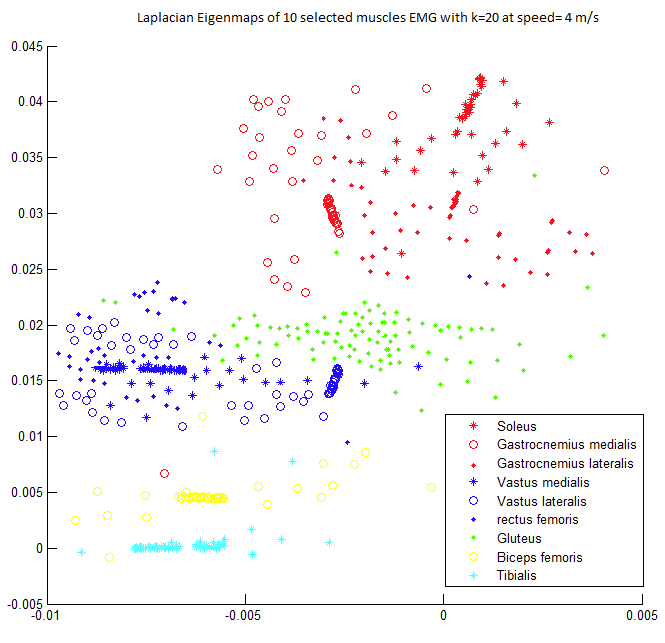Abstract
Electromyography (EMG) is one of the most important interfaces between humans and robots for rehabilitation. Decoding this signal helps to recognize muscle activation and converts it into smooth motion for the robots. Detecting each muscle's pattern during walking and running is vital for improving the quality of a patient's life. In this study, EMG data from 10 muscles in 10 subjects at 4 different speeds were analyzed. EMG signals are nonlinear with high dimensionality. To deal with this challenge, we extracted some features in time-frequency domain and used manifold learning and Laplacian Eigenmaps algorithm to find the intrinsic features that represent data in low-dimensional space. We then used the Bayesian classifier to identify various patterns of EMG signals for different muscles across a range of running speeds. The best result for vastus medialis muscle corresponds to 97.87±0.69 for sensitivity and 88.37±0.79 for specificity with 97.07±0.29 accuracy using Bayesian classifier. The results of this study provide important insight into human movement and its application for robotics research.

